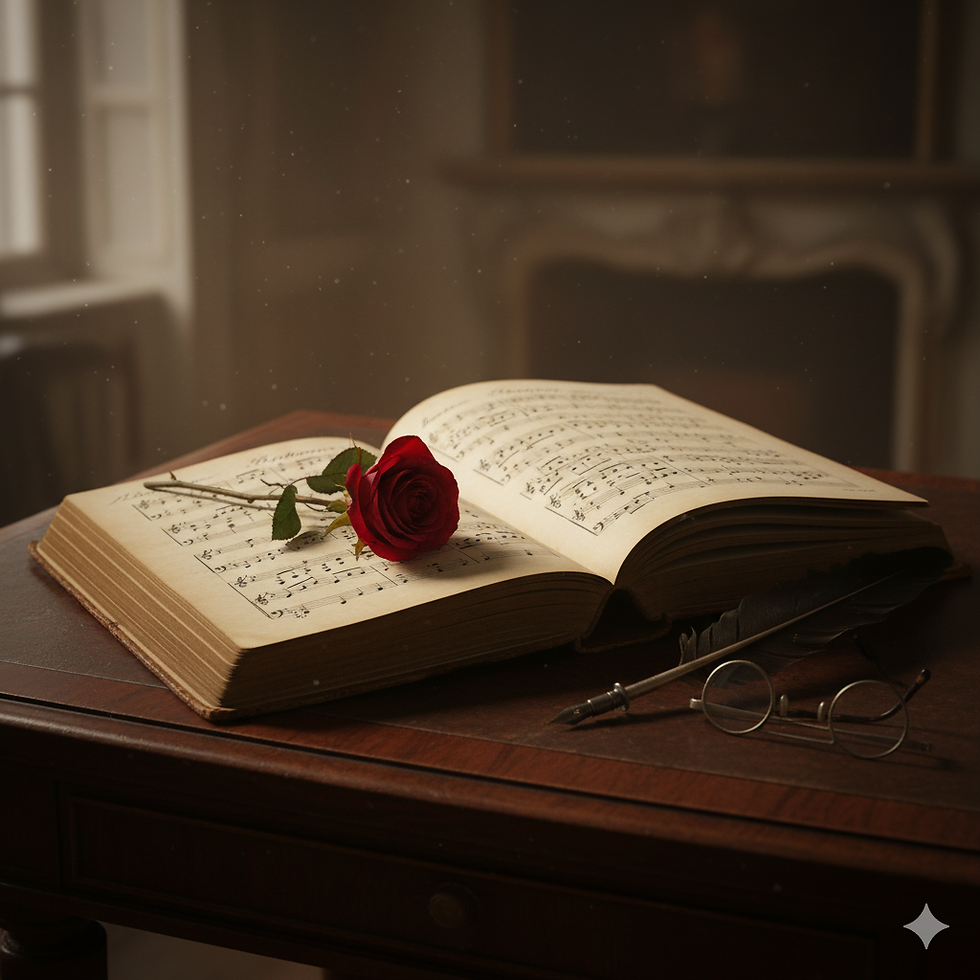The Melancholy and The Man: Brahms's Poetic Voice in a D Minor Waltz
- 13 hours ago
- 2 min read
Brahms's Poetic Voice in a D Minor Waltz

The Romantic Era was an age of grand passion, profound introspection, and reverence for the past.
While his contemporaries embraced dramatic flair, Johannes Brahms, a composer famed for his reserved exterior, poured his most tumultuous emotions into meticulous structures.
The piano was his most intimate confidant.
D Minor: The Secret Code of Longing and Fate
For the Romantic artist, the choice of key was never arbitrary; it was a psychological statement. Composers created elaborate systems where keys were intrinsically linked to specific emotions and philosophical concepts.
When Brahms, the emotional traditionalist, chose D minor for his Waltz, Op. 39 No. 9, he was invoking a powerful, shared cultural vocabulary. In the Romantic key lexicon, D minor was universally associated with sorrow, seriousness, melancholy, and fate.
This key was the domain of great struggle and dramatic tension, used by masters before him, most famously in the mournful majesty of Mozart's Requiem and the stormy emotional opening of Brahms's own youthful First Piano Concerto.
By casting the seemingly light and social form of the waltz into this deep, introspective key, Brahms transforms the piece from a dance for the ballroom into a private meditation on the piano.
A Private Romantic Confession
The Waltz in D minor is a poetic miniature that feels like a shared secret. It captures the Romantic fascination with the internal world:
The Struggle: The opening melody immediately conveys a deep, tender yearning—the melody steps cautiously, weighed down by a Romantic melancholy that mirrors the composer's own temperament.
The Structure: This quiet sadness is balanced by the stable, structured rhythm of the left hand, which provides the gentle waltz "oom-pah-pah." This contrast perfectly encapsulates Brahms's dual nature: a romantic heart contained by a classical mind.
The piece is a testament to the Romantic conviction that music could be a cipher—a beautiful language where the black and white keys could convey the full spectrum of human feeling, from the most tender longing to the resignation of sorrow. To play this waltz is not to play a dance, but to participate in a profound, quiet Romantic confession.



